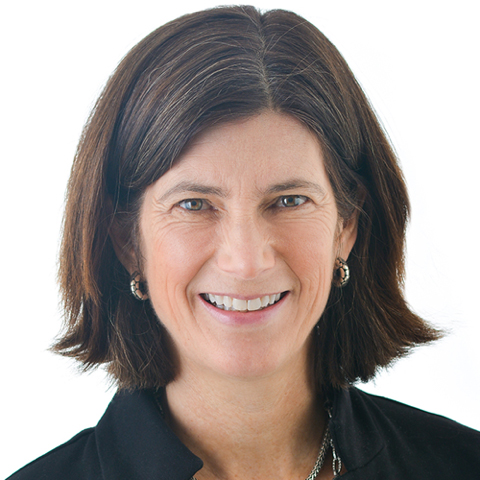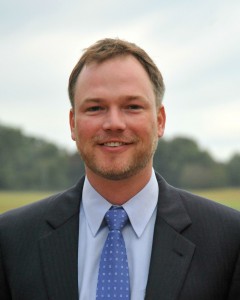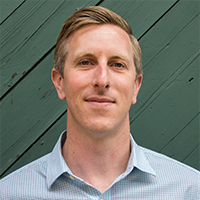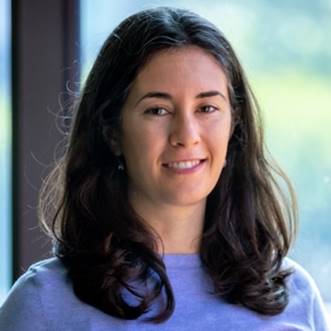Data Analytics Workgroup: SDOH for Research and Treatment of Cardiology Patients
Dr. Michael Berlowitz, Chief of Cardiovascular Operations at the University of South Florida and Jacqueline Tomei, Quality Programs Manager, American Heart Association discuss the use of virtual care, SDOH, and data analytics to deliver care for patients with cardiovascular disease, and the rapid changes made to respond to COVID-19.
Executive Insight - Lisa Ide, MD, MPH, Chief Medical Officer, Zipnosis Talks about Virtual Care and the Future of Healthcare
As we all adjust to teleworking, eHI is working to bring members more virtual learning opportunities. As part of an ongoing series, eHI CEO Jennifer Covich Bordenick will be conducting interviews with healthcare industry experts to discuss, identify and share ideas on how to transform the delivery of healthcare using technology, data and innovation.
Join us for a discussion with Dr. Lisa Ide, MD, MPH, the Chief Medical Officer at Zipnosis to discuss:
- How the COVID-19 pandemic has affected telehealth
- Clinical specialties, outside of urgent care, that have seen increased utilization since the onset of COVID-19
- Predictions for the future of telehealth/healthcare through COVID-19 and beyond
- How health systems best prepare now for future telehealth needs

Dr. Lisa Ide been a practicing physician for over 25 years and is board-certified in occupational medicine. She is a member of Zipnosis’ Clinical Quality Advisory Council, where she is heavily involved in clinical product development..
WEBINAR: COVID-19 and Beyond: Telepsychiatry Best Practices and Regulatory Priorities
Now is the time for telebehavioral health. The COVID-19 global healthcare crisis has meant a remarkable evolution for the already rapidly changing telehealth industry.
In recent weeks, every state, county and community across the United States has experienced a greater prevalence of mental health conditions. As the need for mental health rises, the push for virtualizing interactions is exploding, resulting in a major boom in telebehavioral health.
With unprecedented swiftness, the telebehavioral health industry is experiencing regulatory changes on multiple fronts, including reimbursement, HIPAA compliance standards, prescribing and licensure. Many care settings and clinicians are quickly virtualizing their operations and are working to navigate a whole host of new processes and a new regulatory environment.
Join eHI and Insight + Regroup for this important discussion on telepsychiatry best practices and regulatory guidance during COVID-19 and beyond. Topics to include:
- Best practices for blending clinic-based and in-home care models
- How EDs and crisis centers can face rising need for mental health services
- How phone consultations can supplement virtual care encounters
- Selecting a sustainable telehealth platform that is compliant beyond COVID-19
- Leveraging licensure options to begin delivering care
- Expedited credentialing processes to deploy services quickly
- Regulatory shifts and how they can shape the future of telehealth care delivery
Speakers:

Geoffery Boyce
CEO, Insight + Regroup
Geoffrey Boyce is the CEO of InSight + Regroup, the leading telepsychiatry service provider in the United States with a mission to transform access to quality behavioral health care. Boyce is a leader in telemedicine advocacy, education and reform initiatives. He serves as a national voice promoting telemedicine and telepsychiatry and regularly interacts with state and local healthcare regulators and administrators. In 2017, he received the Industry Leader Award from the American Telemedicine Association. Boyce is an active participant in several ATA Special Interest Groups and Workgroups including: the Telemental Health SIG, the Interstate SIG, the controlled substances prescribing and telehealth workgroup and the proposed workgroup on the expatriate telemedicine providers. He also serves on the advisory board of directors for the Mid-Atlantic Telehealth Resource Center (MATRC). In 2018, he was appointed to the New Jersey Telehealth Review Commission. Boyce frequently speaks about the potential of telemedicine and the best practices for establishing new programs. He holds an MBA from Terry College of Business at the University of Georgia with a focus on entrepreneurship and business planning.

Dr. Irene Epshteyn, MD
Adult Psychiatrist, Whiteside County Community Health Clinic; Associate Medical Director, InSight + Regroup
Dr. Epshteyn is a psychiatrist who earned her medical degree at SUNY Downstate College of Medicine in Brooklyn, NY, where she was a member of the Alpha Omega Honor Medical Society. She completed her adult psychiatry residency training at The Mount Sinai Hospital in New York City. She has experience working with a diverse population in both inpatient and outpatient settings through medication management, individual and group therapy, and crisis intervention. She is interested in trauma, integrative psychiatry, anxiety disorders, schema therapy, and third wave CBT. Dr. Epshteyn supports Regroup’s quality initiatives in various ways, including clinician interviews.

Naveen Kathuria
SVP of Growth & Advisory Services
Insight + Regroup
Naveen has worked in healthcare as an entrepreneur, attorney and consultant. Prior to joining InSight + Regroup, he worked for large law firms, co-founded a preventative care and wellness provider, and consulted hospitals and community health clinics. Naveen spends most of his time working with large partners and tribal communities and and is passionate about improving access to behavioral health in Indian Country and all types of health care settings across the country.
You can video slides for the video here.
WEBINAR: Fitbit Executive Talks About Population Health Initiative During COVID-19 Pandemic
COVID-19 has forced people around the world to make drastic changes to their lives and routines. In the midst of these changes, digital health companies find themselves in a unique position to help people stay active, eat nutritious foods, sleep well, and manage stress during these challenging times. They are also partnering with public health and research partners in order to leverage behavior and biometric data to help detect and prevent the spread of COVID-19.
Fitbit’s Medical Director John Moore and Scripps Research Epidemiologist Jennifer Radin will provide insights as to how wearables can help keep people healthy in times of change, and help detect the spread of influenza-like illnesses, including COVID-19.
Join us to learn:
- How wearables can help keep people healthy in times of change
- How digital health companies can use their products and services to better support users during the COVID-19 pandemic
- How Scripps research harnesses data from Fitbit and other digital health platforms in order to improve detection of influenza-like illnesses
Speakers:

Jonathan Moore
Medical Director, Fitbit
John Moore is a physician, engineer and the Medical Director at Fitbit. He is the former CEO of Twine Health, a Cambridge based company recently acquired by Fitbit. John studied biomedical engineering and then medicine at Boston University. He left the clinical career path, determined to develop solutions to improve healthcare delivery, and earned a PhD from MIT. His research included the intersection of health psychology, learning science, and human-computer interaction, which formed the health behavior change foundation of Twine Health that is now being leveraged at Fitbit. John was recently recognized by Employee Benefits News, as one of the 2019 Digital Innovators: Transforming HR. John finds his fit with various ocean-related activities, including surfing.
Jennifer  Radin
Radin
Epidemiologist, Scripps Research
Jennifer Radin is an epidemiologist at Scripps Research, where she conducts research to improve disease prediction and prevention by incorporating digital devices, sensors and platforms. Before joining Scripps, she worked with the Operational Infectious Disease Department at the Naval Health Research Center and the Influenza Division at the Centers for Disease Control and Prevention. Jennifer received her doctoral degree in Epidemiology from the University of California, San Diego and San Diego State University. She also holds a master's of public health, specializing in Epidemiology of Microbial Diseases, from Yale University and a bachelor's degree in Biology from the College of William and Mary.
eHI Explains: Medicare Telehealth Reimbursement During COVID-19
Background: Through Congressional action, the Secretary of Health and Human Services (HHS) was granted the authority to waive underlying statutory restrictions on Medicare reimbursement of telehealth services during the COVID-19 public health emergency period. The Centers for Medicare and Medicaid Services (CMS) has implemented this flexibility through the issuance of waivers, as well as an interim final rule.
As health care facilities and provider practices look to protect their providers and patients from COVID-19, telehealth provides a safe and effective option for providers to continue to treat patients from a distance. eHI has put together this FAQ document to help those who are implementing telehealth during this period.*
Coronavirus Testing Capacity Is Going Unused
Coronavirus Testing Capacity Is Going Unused
Many U.S. labs say they can process far more tests than doctors, hospitals have ordered.
By Brianna Abbott and Sarah Krouse
April 29, 2020
Many commercial and academic laboratories in the U.S. are processing coronavirus diagnostic tests far below their daily capacity, leaving tools crucial to slowing the virus’s spread unused.
Some labs across the country say they are processing less than a quarter of the diagnostic tests for Covid-19, the illness caused by the new coronavirus, they are equipped to manage. Lab executives and public-health officials blame barriers including fragmented supply chains, relatively strict test guidelines, incompatible electronic systems and a lack of centralized data on where capacity exists.
The result is a disorganized system that isn’t matching the limited testing supply with the demand, and some public-health experts are calling for national coordination to scale up quickly.
Most tests to diagnose Covid-19 involve taking a nasopharyngeal swab to collect the patient sample and then running the polymerase chain reaction, or PCR, test in a laboratory. As testing becomes one of the most hotly debated topics during the coronavirus crisis, WSJ’s Gerald F. Seib explores what role pharmacists will play in diagnosing patients.
“We have university laboratories around this country that have the ability to run 1,000 or 3,000 tests per day, yet many of them are nowhere near capacity,” said Michael Pellini, managing partner of venture fund Section 32 and a contributor to the Rockefeller Foundation’s national Covid-19 testing action plan. “We need to make sure they’re utilized.”
Members of the American Clinical Laboratory Association, which include testing giants Quest Diagnostics and LabCorp, also aren’t receiving test orders in numbers to match their full capacity, said Julie Khani, ACLA’s president. The companies, some of which previously had backlogs of several days following an initial flood of orders, now are contacting physicians to let them know they have unused resources.
Covid-19 test access varies widely across the country, with some sites making tests available only to patients with severe symptoms and to front-line health and public-safety workers. Other sites offer tests to people with mild symptoms and all essential workers.
On Monday, the Centers for Disease Control and Prevention broadened its priority for testing, adding symptomatic first responders and people in longterm-care facilities, prisons and shelters to the top tier. The priority list for the first time includes people without symptoms, at a clinician or public-health authority’s discretion, though they aren’t the highest priority.
Many companies say widespread worker testing is part of their return-to-work plans.
Last week, the Trump administration provided governors with lists of sites with unused testing capacity. States, cities and organizations have started coordinating to expand and work through the logistical barriers.
Labs across the U.S. processed just over 1.5 million Covid-19 diagnostic tests within the past week, according to the Covid Tracking Project. But public-health authorities say the country is still far behind where it needs to be to test suspected cases, isolate them and trace their close contacts—all necessary to ease out of lockdowns safely.
With the full potential of U.S. hospital, commercial and academic labs unlocked, testing could scale from roughly 1.5 million to 3 million weekly tests within eight weeks, says Rajiv Shah, president of the Rockefeller Foundation.
But then jumping to 30 million weekly tests—the next phase in the foundation’s plan—would likely require new tech, such as quality rapid tests and at-home testing, he said. The Defense Production Act would also likely need to be invoked, according to the foundation’s report.
Limited access to basic supplies, such as swabs and chemical reagents, has plagued labs across the country for weeks, and these supply-chain issues persist. But obstacles to scaled-up testing go further to include other logistical barriers and lack of doctor and patient awareness of what’s available. Some facilities fear that if they use up their testing supply too fast, they won’t be able to get more, lab-testing officials and hospital workers say.
There is currently no centralized nationwide database of testing availability for doctors to consult before sending patients for tests.
San Francisco’s Department of Public Health has the ability to process 4,300 diagnostic tests a day at three labs it works with, said Susan Philip, director of infectious-disease prevention and control at the agency. On average, only 500 tests a day are completed for city residents at those labs and others.
The reason for the gap could be that initial guidance was to restrict access to tests and has since evolved, Dr. Philip said. The city aims to use 80% to 90% of its capacity, she said, and last week announced it would expand testing for all private-sector, public and nonprofit essential workers and symptomatic residents who couldn’t get tested elsewhere.
The Michigan Department of Health and Human Services last week sent out an alert telling doctors there is unused capacity throughout the state.
NxGen MDx, a laboratory in Grand Rapids, Mich., is processing about 25% of the 7,000 coronavirus diagnostic tests it can handle a day. “The key thing now is getting the word out that the net is wider,” said Doug McIntosh, senior director of marketing.
Part of the challenge in making full use of testing capacity is the “deep fracturing of the system,” with little coordination between doctors, patients, labs and insurers, said Othman Laraki, chief executive at Color, which conducts coronavirus tests.
Most health systems have contracts with specific labs and sometimes don’t stray from them, and some insurers won’t pay reimbursement for outside labs, Dr. Pellini of the Section 32 fund said. He adds, however, that such problems are being addressed for Covid-19. Smaller labs often don’t have the purchasing power or electronic infrastructure in place to come online easily; those that do sometimes don’t have compatible systems, he said.
The University of California, San Francisco, announced Friday it would offer free test results to all 58 county public-health departments in California after setting up a new diagnostic lab. One of the biggest challenges now is the logistics of getting patient samples and information to the lab and then sending the results where they need to go, says Steve Miller, professor of laboratory medicine at UCSF.
To communicate results with some of the incompatible systems outside of the hospital, the lab faxes them. “As you can imagine, that is not a very scalable thing,” Dr. Miller said.
Unused capacity could be put to work in high-risk places like assisted-living facilities, where understanding who is sick helps inform housing and staffing choices, said David Dexter, chief executive of Sonora Quest Laboratories, in Arizona. Many facilities still don’t have easy access to testing.
Researchers have suggested that infected nursing-home staff who are asymptomatic are a likely source of infections in the facilities, which have tallied thousands of deaths from Covid-19. They have found that separating infected residents from others is difficult when many don’t show typical signs of the illness and thus don’t get tested.
The organization Mr. Dexter leads is using only 20% of its PCR test capacity, “which I think is a travesty,” he said.
WSJ: Coronavirus Testing Capacity Is Going Unused
Many commercial and academic laboratories in the U.S. are processing coronavirus diagnostic tests far below their daily capacity, leaving tools crucial to slowing the virus’s spread unused.
Some labs across the country say they are processing less than a quarter of the diagnostic tests for Covid-19, the illness caused by the new coronavirus, they are equipped to manage. Lab executives and public-health officials blame barriers including fragmented supply chains, relatively strict test guidelines, incompatible electronic systems and a lack of centralized data on where capacity exists.
Download full article below.
Webinar Presentation: COVID-19 Impact: Addressing Capacity and Cashflow with Virtual Care
COVID-19 has highlighted the need for virtual care strategies and has set the tone for future care as it helps to solve many of the current and future challenges health systems face with capacity, value-based initiatives, and cashflow. Remote Patient Monitoring solutions are maximizing care delivery value by delivering quality care beyond just reducing the number of patients in healthcare systems. Consumers are becoming accustomed to the ease, convenience, and benefits remote offerings deliver.
Join experts across the provider, regulatory, and technology space for a discussion on:
- How health systems are currently responding to COVID-19 with remote monitoring;
- How remote patient monitoring (RPM) can and will be used with telehealth services in the virtual care model of the near future;
- How the current and future policy and reimbursement changes will impact RPM and telehealth delivery;
- How health systems are using technology to create a strong revenue stream amidst financial uncertainty;
- Health systems’ immediate and long-term plans for RPM post-COVID-19 and ongoing demonstrations of scale and ROI.
Presentation Slides can be found at the bottom of this page.
Speakers:
Vineeth Yeddula
Co-Founder and CEO KPI Ninja 
Co-Founder and CEO of one of the fastest growing healthcare analytics company, KPI Ninja. More than ten years of healthcare experience in leadership, analytics, population health, and performance improvement. A proven leader offering expertise in creating a data-driven, team-based, continuously improving, and patient centered organizational performance improvement culture.
COVID-19 Federal Policy Work Group: Public Health Surveillance (Members Only)
Thank you to everyone who joined our June 8th COVID-19 Federal Policy Workgroup. The meeting focused on health information exchange. You can find a recording of the meeting here.
COVID-19 Federal Policy Work Group: Health Information Exchange (Members Only)
eHI invites our members to join us in our COVID-19 Federal Policy Work Group series to help craft a report with a set of recommendations to fully leverage health IT and digital health to fight COVID-19 and future public health challenges. This meeting will focus on the health information exchange.
